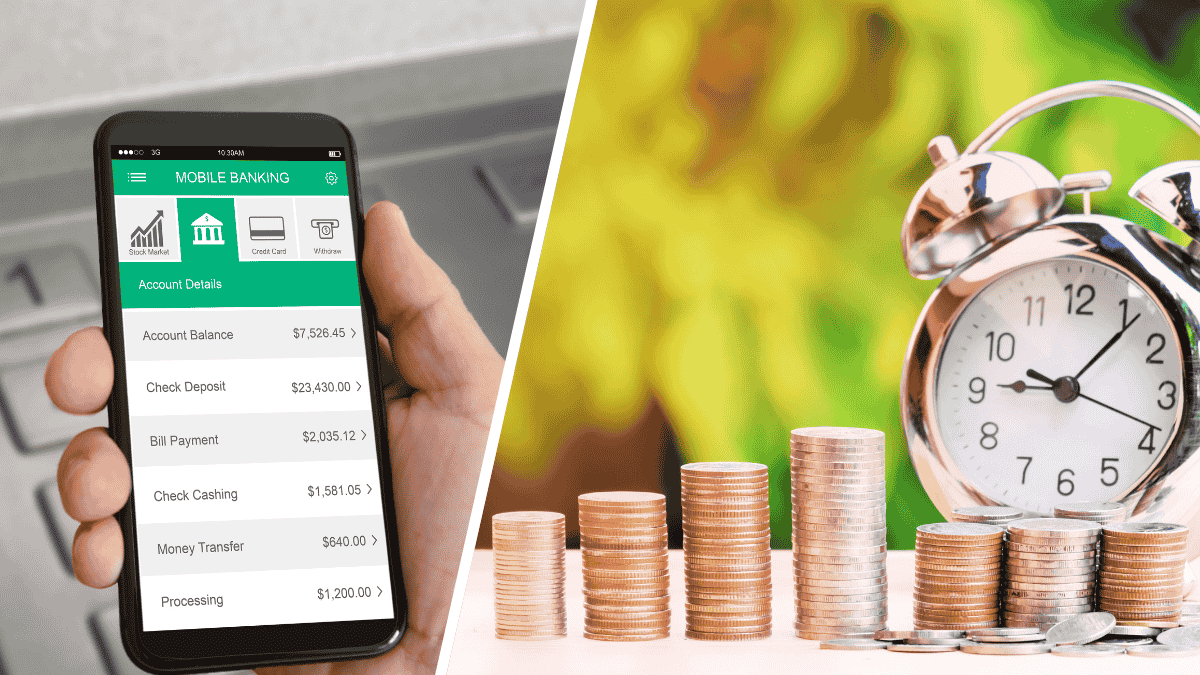
A term deposit is a low-risk investment product that allows you to lock away your money for a pre-determined period at a fixed rate of interest. This can be anywhere from one month to five years. Essentially, you’re guaranteed a certain return while protecting your investment from volatile market shifts.
However, there is a catch - you’re unable to access the money until the term is up. Hence the phrase ‘lock away.’
When your term deposit reaches maturity, you typically have a few choices at hand: you can withdraw your cash plus interest earned, roll over your funds into another term deposit, or withdraw some and invest the rest.
If you have some cash that you know you won’t need for a while, a term deposit could be a good way to put that money to work. But how do you even apply for one in the first place?
What is a term deposit?
A term deposit is a type of investment where your money earns a locked-in interest rate over a fixed time frame - typically ranging from six months to five years. During this time, your funds earn interest at a guaranteed rate, which is locked in for the full term, regardless of changes in market rates.
Read More: What is a term deposit and how do they work?
How long does it take to open a term deposit?
Opening a term deposit is generally a quick process, often completed within 10 to 20 minutes online or at a branch. Most banks allow existing customers to open a term deposit instantly through their online or mobile banking platforms.
For new customers, you may need to provide identification and complete a brief application, which can slightly extend the process. Once submitted, the term deposit is typically activated immediately or within one business day, depending on the institution and payment method used to fund the deposit.
How to open a term deposit
Here is a step-by-step guide on opening a term deposit account in Australia.
1. Prepare a budget
A term deposit can be a long-term commitment, especially if you’re locking away your pennies for over a year. That’s why it pays off to have a budget - along with your future plans - in mind before you decide on a product.
Think twice about locking away all of your funds - you need enough available to access in case of an emergency. The last thing you want is to be making an early withdrawal (which will likely incur fees) because you didn’t have a spare $2,000 to fix your damaged car.
If you’re actively looking to purchase a big-ticket item such as a car or boat in the near future, then a term deposit may not be the right course of action. You could consider a high-interest savings account instead.
Only open a term deposit if you are certain you won’t need that money for the chosen term. While most banks have a short cooling off period if you made a mistake, you’ll want to make sure you can see out the term.
2. Compare your options and choose your product
Before you open a term deposit, it's important to consider your options and compare the different products available to you. Research the interest rates on offer, account types, term lengths, fees, and the potential features e.g. automatic rollover, grace periods (some may be seven days while others are 14).
Most lenders let you apply for a term deposit account online, over the phone, or in person at a branch.
Choosing the right term deposit starts with understanding how different banks and lenders stack up. Compare key features, including interest rates and term lengths, to find the term deposit that fits your financial goals.
| Bank | Term Deposit | Interest Rate | Interest Frequency | Term | Automatic Rollover | Maturity Alert | Early Withdrawal Available | Minimum Deposit | Maximum Deposit | Notice Period to Withdraw | Account Keeping Fee | Online Application | Joint Application | Tags | Features | Link | Compare | Promoted Product | Disclosure |
|---|---|---|---|---|---|---|---|---|---|---|---|---|---|---|---|---|---|---|---|
3.80% p.a. | At Maturity | 6 months | $5,000 | $10,000,000 | – | – |
| ||||||||||||
4.40% p.a. | At Maturity | 6 months | $1,000 | $1,000,000 | – | – | |||||||||||||
4.00% p.a. | At Maturity | 6 months | $25,000 | $10,000,000 | – | – | |||||||||||||
4.25% p.a. | At Maturity | 6 months | $5,000 | $500,000 | – | – | |||||||||||||
4.40% p.a. | At Maturity | 6 months | $1,000 | $1,000,000 | – | – |
3. Prove your identity
Often, you’ll need to provide some form of ID when opening a TD such as: your personal details (name, address, phone number), driver’s license, Medicare card, and passport.
You will also be required to provide your Tax File Number (TFN) because interest income is treated as taxable income. If you don’t provide your TFN, any interest income will be taxed at the highest marginal rate (45%), and you won’t get your maximum interest earnings until the end of the financial year.
Typically, you can provide your TFN when initially applying for a TD or via the bank’s online portal or app later down the line.
Age limits on term deposits vary between lenders - some are available to savers as young as 14.
4. Supply your member number and nominate a transaction account
If you already have an account with the chosen bank, you can supply your existing account or member number. If not, you will need to sign up.
You may find some banks require you to hold an existing transaction account with them before opening a TD. However, some might let you link an outside account.
This is so interest can be paid into the transaction account at your nominated interval - typically anywhere from fortnightly to at-maturity. And once your term deposit is over, the principal investment will likely be transferred into this account as well.
5. Have a minimum deposit ready
Once you nominate the term you want to invest for and the corresponding interest rate, the time will come to lock away your money. Many term deposits require a minimum investment - often around $500 to $1,000, but can be in excess of $100,000 for certain term deposit products. Major banks often have $5,000 as a minimum investment.
On the flipside of that is a maximum deposit. Many term deposit accounts have very generous deposit limits, sometimes $1 million or more. However if you have more than this, you may wish to spread the cash around different accounts.
You may also wish to spread large chunks of cash around different banks, because the government guarantees up to $250,000 per account holder per bank. If you have say $500,000 and in the highly unlikely event the bank collapsed, you could lose $250,000.
6. Transfer the funds
But how do I transfer my funds into the TD account?
There are four options:
-
Online banking app
-
Telephone
-
In a branch
-
BPAY
Most banks recommend transferring money through the online banking app using the term deposit’s BSB and account number, as this is often the fastest and most convenient method. The New Payments Platform and Osko have quickened the pace of transfers.
If a speedy transferral of funds and interest is important to you, it pays to find a bank that uses Osko - some don’t, so be warned.
From there, sit back and watch your funds earn interest! And while it might be a few months or years off, it could be worthwhile thinking about your rollover options, e.g. re-investment, collecting the interest and cashing out, or a mixture of both.
First published in April 2019




